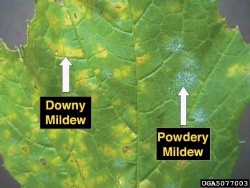Genetic variations offer clues to treating childhood cancer
Subtle genetic variations offer clues to treating childhood cancer
Media Release - University of Auckland
12 November 2015
Targeted cancer treatment has become so refined that researchers can now look at one DNA base out of six billion to get clues on how to treat the disease.
University of Auckland paediatric cancer specialist, Dr Andrew C Wood was co-lead author on a paper published in leading scientific journal, Nature this week that is at the cutting edge of genetic cancer studies.
Dr Wood undertook the research for this paper when he was working at the Division of Oncology and Center for Childhood Cancer Research at the Children’s Hospital of Philadelphia. This followed previous work published in Nature in 2011 by the same team.
Dr Wood returned to New Zealand in September last year to continue research into paediatric cancers, particularly leukaemias, at the University of Auckland.
“One of the challenges in trying to improve outcomes for cancers is finding new drugs that can cure cancer without causing side effects,” he says. “Most of the drugs we use to kill cancers rely on generic activity against fast growing cells, but these weren’t very specific for cancer and unfortunately they damage healthy cells too.”
“Then we got into the era of finding mutations in cancers and treating over-active enzymes called kinases,” says Dr Wood. “That’s when people did big studies doing gene sequencing to try and find new therapeutic targets.”
“Despite some big wins for some cancers, the era of massive gene sequencing of cancer is coming to an end as most of the cancers have been sequenced,” he says. “The problem is that many patients don’t have mutations that we can use these modern therapies on.”
“This paper approached target discovery in a different way,” says Dr Wood. “Instead of focusing on the genetics of the cancer cells, we focused on common and subtle genetic variations that children inherit from their parents called SNPs (pronounced ‘snips’).”
“We used a method called Genome Wide Association Study or GWAS to ask why some children developed a cancer called neuroblastoma, and not others.”
“In previous work our team found a large number of genetic variations in the vicinity of a gene called LMO1 that were linked to this aggressive cancer,” he says. “But we weren’t sure which particular SNP caused neuroblastoma, or why?”
“In this study we showed that a subtle change in a single DNA letter increased the amount of LMO1 that cells manufactured,” says Dr Wood. “The LMO1 gene regulates other genes much like the conductor of an orchestra, or the first-five eighth. In this way the effect of an apparently minor DNA alteration is amplified”.
“Although we don’t have the final answer, we discovered an Achilles’s heel that may result in better treatments” he says.
ENDS


 Environmental Protection Authority: EPA Approves New Fruit Fungicide
Environmental Protection Authority: EPA Approves New Fruit Fungicide Science Media Centre: Landmark Climate Change Case This Week – Expert Reaction
Science Media Centre: Landmark Climate Change Case This Week – Expert Reaction Stats NZ: Total Greenhouse Gas Emissions Rise 0.9 Percent In The March 2025 Quarter
Stats NZ: Total Greenhouse Gas Emissions Rise 0.9 Percent In The March 2025 Quarter Commerce Commission: ComCom Finds No Evidence Of Cartel Behaviour In Banks’ Involvement In Net-Zero Banking Alliance
Commerce Commission: ComCom Finds No Evidence Of Cartel Behaviour In Banks’ Involvement In Net-Zero Banking Alliance Hāpai te Hauora: Pātea - A World-First Māori Gambling Harm Digital Platform Launches Across Aotearoa
Hāpai te Hauora: Pātea - A World-First Māori Gambling Harm Digital Platform Launches Across Aotearoa Āti Awa Toa Hauora Iwi Māori Partnership Board: New Whaitua Mapping Tool And Monitoring Our Oranga Framework Places Health Information In Whānau Hands
Āti Awa Toa Hauora Iwi Māori Partnership Board: New Whaitua Mapping Tool And Monitoring Our Oranga Framework Places Health Information In Whānau Hands


